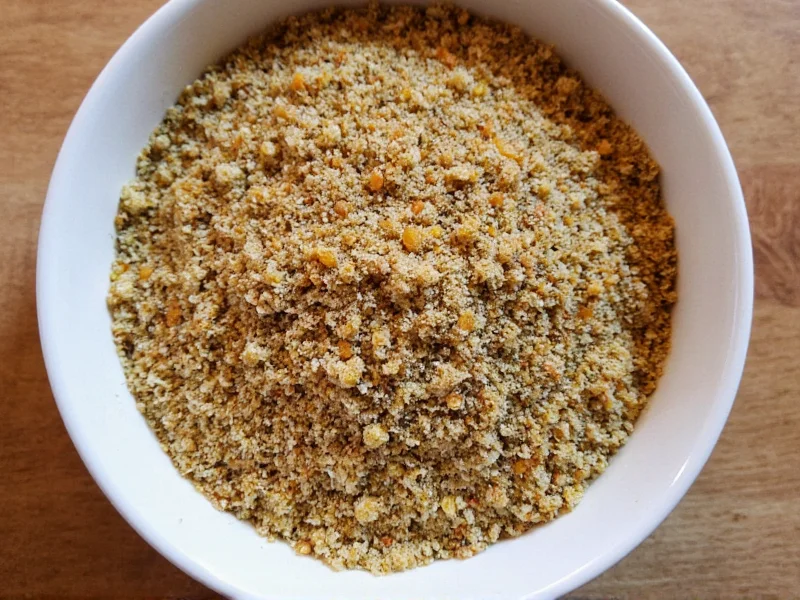When home cooks search for “reo seasoning,” they’re almost always seeking information about ranch seasoning—the popular herb-and-buttermilk-flavored blend used in dressings, dips, and dry rubs. This linguistic mix-up occurs regularly in grocery stores, recipe discussions, and online searches, creating unnecessary confusion for people trying to replicate favorite restaurant flavors or find specific products.
Why the Ranch/REO Confusion Happens
The phonetic overlap between “Ranch” and “REO” explains most “reo seasoning” searches. When spoken quickly, “Ranch” can sound like “Ray-Oh” or “Ree-Oh,” especially in noisy environments like kitchens or grocery aisles. Digital assistants and voice search tools frequently misinterpret the spoken term, converting “ranch” to “reo” in search results.
Historical context adds another layer: REO was an early 20th-century automobile manufacturer, but this has no connection to seasoning blends. No major food brands currently market products under “REO Seasoning,” confirming the term’s status as a persistent culinary misnomer rather than an actual product category.
What Ranch Seasoning Actually Contains
Ranch seasoning—the product people seek when searching “reo seasoning”—typically combines dried herbs, buttermilk powder, and savory seasonings. Commercial blends maintain consistent ratios while homemade versions allow customization. The following table breaks down standard components:
| Core Ingredient | Typical Percentage | Flavor Contribution |
|---|---|---|
| Garlic powder | 20-25% | Pungent, aromatic base note |
| Onion powder | 15-20% | Sweet, savory depth |
| Dried parsley | 10-15% | Grassy freshness |
| Dill weed | 8-12% | Subtle tanginess |
| Buttermilk powder | 25-30% | Creamy tang foundation |
| Salt & pepper | 10-15% | Flavor enhancer |
Creating Authentic Ranch Flavor at Home
Understanding that “reo seasoning” refers to ranch allows home cooks to recreate this versatile blend. The critical element distinguishing ranch from similar herb mixes is buttermilk powder—a component often missing in “ranch-style” knockoffs. For optimal results when making ranch seasoning from scratch:
- Use high-quality buttermilk powder (check expiration date for freshness)
- Bloom dried herbs in 1 tsp olive oil before mixing for enhanced flavor release
- Add 1/4 tsp citric acid to mimic the tang of fresh buttermilk
- Store in an airtight container away from light to preserve potency for 3-4 months
Common Ranch Seasoning Misconceptions
Beyond the “reo” confusion, several myths persist about ranch seasoning. Clarifying these helps cooks achieve better results:
Misconception: All ranch seasoning contains MSG
Reality: While some commercial blends include monosodium glutamate, many popular brands like Hidden Valley offer MSG-free options. The savory flavor primarily comes from the buttermilk powder and garlic-onion base.
Misconception: Ranch seasoning works equally well for grilling and dressings
Reality: Grill-ready ranch rubs contain less buttermilk powder and more salt to withstand high heat, while dressing blends have higher dairy content for creaminess. Using the wrong type yields subpar results.
Regional Variations in Ranch Terminology
The “reo seasoning” confusion appears most frequently in the Midwest and Southern United States, where regional accents may emphasize certain syllables. Some areas use descriptive terms like “buttermilk herb blend” or “dill ranch mix” to avoid ambiguity. Specialty stores in these regions sometimes list products under both “ranch” and phonetic approximations to accommodate local search habits.
When shopping for ranch seasoning, checking ingredient labels proves more reliable than relying on packaging terminology. Products containing buttermilk powder, dried dill, and parsley as primary ingredients will deliver authentic ranch flavor regardless of what the front label calls it.
Practical Applications Beyond Salad Dressing
Once you’ve sourced proper ranch seasoning (not “reo”), its versatility expands far beyond dressing. Professional chefs use it to:
- Enhance roasted vegetable flavors (toss potatoes with 1 tbsp per pound before roasting)
- Create crispy herb coatings for proteins (mix with panko breadcrumbs)
- Boost flavor in compound butters for grilled meats
- Season popcorn or snack mixes for savory treats
- Improve moisture retention in baked goods like savory muffins
The buttermilk component reacts with baking soda in recipes, providing subtle leavening while adding distinctive tang—a chemical interaction absent in similar herb blends like Italian or Greek seasoning.











 浙公网安备
33010002000092号
浙公网安备
33010002000092号 浙B2-20120091-4
浙B2-20120091-4